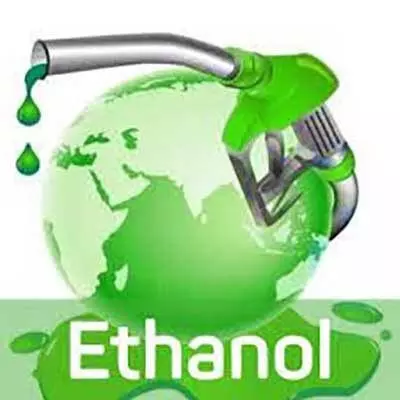Transforming India's Energy Landscape: The Rise of Ethanol in Petrol

The Government is implementing a series of comprehensive reforms designed to strengthen energy security, address climate change, and invigorate the rural economy. Initially set for 2030, the target for 20% ethanol blending in petrol under the Ethanol Blended Petrol (EBP) Programme was moved forward to 2025 by the Cabinet Committee on Economic Affairs (CCEA) in 2020. This decision underscores the government's dedication to accelerating the adoption of ethanol as a sustainable energy source.
India’s progress in the EBP Programme has been remarkable, with ethanol production capacity more than doubling in the past four years to reach 1,623 crore litres as of September 18, 2024. This significant increase illustrates the government's commitment to positioning ethanol as a key component in the nation’s energy strategy.
The Ethanol Supply Year (ESY), which runs from November to October, has seen impressive growth in ethanol blending. In ESY 2013-14, the blending volume was just 38 crore litres, representing a blending percentage of 1.53%. By ESY 2020-21, these figures had skyrocketed, with blending volumes reaching 302.3 crore litres and a blending percentage of 8.17%. This growth coincided with a substantial increase in petrol consumption, which rose by approximately 64% during the same period.
As the world’s third-largest energy consumer, India has long relied on oil imports to meet its energy needs, creating challenges for energy security and leading to significant foreign currency outflows. However, the initiative to blend ethanol with petrol presents a promising opportunity to mitigate this dependence while simultaneously addressing environmental concerns. Ethanol, derived from sugarcane processing, not only reduces fossil fuel consumption but also helps decrease harmful carbon emissions that contribute to climate change and public health issues.
The practice of blending ethanol with petrol began in India in 2001 as a pilot project, but progress was slow for many years due to stagnant ethanol production. Recent comprehensive reforms have unlocked the initiative’s potential, yielding substantial benefits in terms of energy security and rural economic revitalization. Increased ethanol production provides farmers with new income streams, bolstering the agricultural sector and promoting economic growth in rural areas.
The government's proactive stance on ethanol blending is further evidenced by the decision to advance the 20% blending target to 2025. During the 7th G-STIC Delhi Conference, Minister of Petroleum and Natural Gas Shri Hardeep Singh Puri emphasized India’s successes in this initiative and reiterated the government’s commitment to sustainable energy solutions. He also indicated that planning is underway for goals beyond the current target, signaling a forward-thinking approach to address future energy demands.
Ethanol, one of the primary biofuels, is produced naturally through the fermentation of sugars or via petrochemical processes. It serves not only as an alternative fuel but also plays diverse roles across various industries, including as a chemical solvent and in the synthesis of organic compounds. Additionally, its medical applications as an antiseptic and disinfectant add to its versatility.
In light of India’s rising energy demand, driven by economic growth, population expansion, urbanization, and changing lifestyles, ethanol is poised to play a critical role in the nation’s energy landscape. As of March 2024, approximately 98% of the fuel used in road transportation still comes from fossil fuels, with only 2% supplied by biofuels like ethanol. This heavy reliance on fossil fuels raises significant challenges related to energy security, foreign currency outflow, and environmental impact.
India’s shift toward ethanol blending not only enhances its energy security but also fosters economic growth and sustainability, making it a vital component of the country’s future energy strategy.
